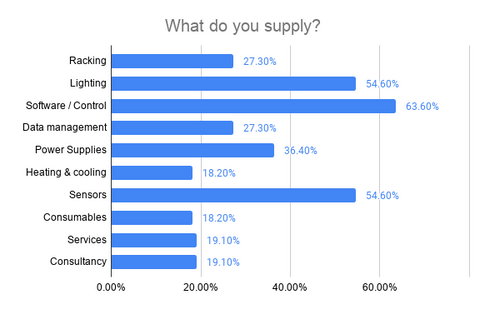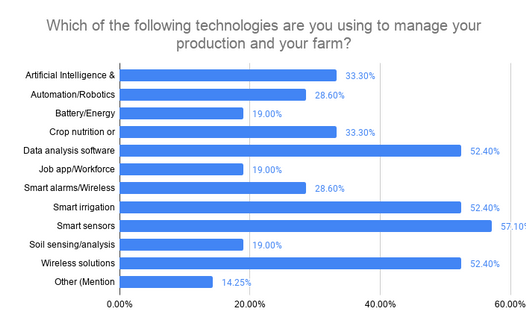Trust in any relationship is pivotal, so when asking the question ‘how can you trust in vertical farms’ it seems to have a profound impact and potential on any person in this sector. Vertical Farming (VF) has gone through doubts, suspicion and a great deal of debate. It would seem that many vertical farm start-ups appear and then sometimes quickly disappear again. So, what is happening here? Is it the case that people present amazing, exciting ideas and then struggle to deliver. Or on other hand, is it that many vertical farm start-ups have also survived the entrance challenges are growing, expanding and flourishing. The truth is that what vertical farms try to achieve is really difficult and requires a combination of interpersonal and technological skills, knowledge, experience and the right staff. So, really trying to find the ‘holy grail’ or the perfect formula for creating an effective vertical farm is in demand.
We at UKUAT have become fascinated with this topic and in anticipation of the upcoming FFT Expo 2020, worked together with the FFT Expo team to learn how vertical farmers are doing. We created a survey investigating which are the major challenges and priorities of the CEA (Controlled Environment Agriculture) as we wanted to better understand the VF business world and the challenges they face. Based on the results of the survey, we set to task on creating a webinar addressing these profoundly interesting issues. The responses were fascinating and for the purpose of this blog we will share some insights. However for more details you may be interested to know we will be having a webinar that will be available live on Thursday 3rd September at 11:00 (UK time) and on-demand on this very topic of trust in VF! For more info follow the link. Amazing I hear you cry, well of course, we are here to help and more importantly it’s our passion and interest.
Survey findings
The survey went live on the 17th July 2020 for a period of two weeks, and focused on the topic of ‘’Challenges and Priorities in CEA’’, and we had a fantastic response as a total number of 36 responses were recorded (thank you to everyone that participated). From the total number of responses, 72.2% were companies that were vertical farms. 80.6% of the total responses came from the UK, while 42.3% considered themselves to be suppliers. So, why is this important? Well, if we don’t understand the sector and who is involved how can we possibly help? Since this is our aim, it’s probably very important to get a sense of what exactly is going on.
Additionally, the majority of the suppliers provide “Software and Control Systems” (63.6%), “Lighting solutions” (54.6%) and “Sensors” (54.6%). See graph 1 for the summary of the responses. This appears as though the industry is varied in skills and expertise, there is no one unified area that seeks to dominate. Instead there is a plethora of skills and attributes that all coalesce to make this industry more fascinating than first imagined.

We also posed the open question of “How do you impact the Vertical Farming market?”, we received responses which included: R&D, design and building of vertical farms, electrical systems, lighting manufacturer, control systems, education/academia, consultancy/advisory capacity and advocacy. How does this impact you as a reader you may be asking? Well, having a holistic approach can help develop the future leaders of the industry. This overview approach always reminds me of Steven Covey’s principle of leaders and managers where he states ‘if a team is in a jungle and they have to get from A to B a good manager will help sharpen the axes and create amazing shift rotas so the job gets done. Whereas a good leader will climb the nearest and highest tree and will shout to all below ’wrong jungle’. That’s the point of a holistic point of view to understand the jungle you’re in, again this is what we are trying to provide and help you the vertical farmer!
We also asked ‘as a Vertical Farmer what are/ is your main product?” and the most common response was lettuce. Other responses included herbs, salads, microgreens, and mushrooms. So, why aren’t other plants being addressed or why was lettuce the most common and what does this tell us about vertical farming. These are the questions that we seek to better understand. Having 36 responses has limited our findings, but is still interesting to see that lettuce and greens are the main products. Wondering when fruits will pop in the industry…
It has to be said that vertical farms owe their existence to technologies and will probably depend on future technologies; at least until we have a breakthrough in affordable production or some genius comes along and shows where to go or to better guide us where we are. So, we asked, “Which are the main technologies that vertical farms are using to manage production?” Most respondents use “Smart sensors” (57.1%), “Data analysis software” (52.4%), “Smart irrigation system/water monitoring” (52.4%) and “Wireless solutions” (52.4%). Check graph 2 for the detailed responses to this question.
We also offered respondents the opportunity to respond to an open question of which other agtech technologies would help them with their farm. The responses were probably predictable. The answers included: greater access to funding, business modelling, plant science, energy saving, access to land, automated seeders, cheap sensors for mini-farms, light recipes, light specifications and standards, air flow technologies and sensors. It would seem that an interesting and developing area would be smart sensors, given that we are seeing massive advances in the mobile phone and other technologies that include different sensors it only begs the question of how long will it take for the vertical farming industry to catch up? Hopefully it shouldn’t take too long, but the positives are that we are going in the right direction.

Additionally, we also found that 61.9% of the respondents answered yes to the question “Are you planning to invest in any new technology in the coming months?”, and they are keen to invest in the areas of data management, software development, automated seeder, smart sensors, remote monitoring, lighting solutions, Artificial Intelligence/Robotics, 3D printers and all-in-one grow units. This again probably gives us all a great ‘state of play’, as if technology is important to the growth of the industry then it is definitely something that we should invest in. And maybe more importantly, the more we invest, the better the technology will become and then we can potentially build an amazing bond of trust in the industry.
Which are vertical farms current priorities? Check out the graph 3 below. No winner here, and vertical farmers have a holistic approach on priorities. The truth is that we can not rely only on technology, without having to crack the plant science or without having the right staff.

Thank you once more for your fantastic responses. We hope the info shared on this blog-post to be useful to you and your business, and looking forward to seeing you on Thursday on our webinar.

Webinar
For more info about trust in VF/CEA, register for the webinar “What technologies would help to grow trust for Vertical Farmers?” on Thursday 3rd September 11:00 (UK time) hosted by Mark Horler, and guest speakers Dr Laura Vickers (Harper Adams University), David Farquhar (Intelligent Growth Solutions), Jack Farmer (LettUs Grow).
To register follow the link
FFT Expo 2020
To take part in the upcoming Future Farm Technologies Expo 2020 in Birmingham, NEC on the 11th-12th November 2020 register here. Attendance is free for attendees, while companies which are interested to exhibit can contact Dean Chapman on dean.chapman@reedexpo.co.uk or visit the website at https://www.fftexpo.com/en-gb/about.html
